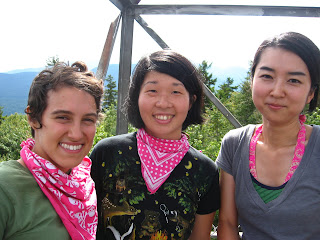About five minutes ago I submitted my abstract for the American Geophysical Union (AGU) Fall Conference. This is my first time submitting a paper for a conference! The conference will be held this coming December (don't ask me why it's called a 'Fall Conference') in San Francisco. I'm excited about this opportunity to share my research and meet lots of environmental engineering nerds from all over the country.
Here is my abstract:
Title: Modeling the Impact of Landscape Variability on Nutrient and Pesticide Dynamics in CEAP Watersheds
Authors: Sheila M. Saia, Tammo Steenhuis, Zach Easton, Jan Boll, Erin Brooks
Keywords: water quality, best management practices, runoff
The effectiveness of agricultural conservation strategies for reducing soil, nutrient, and pesticide transport varies among landscape type and climate. For instance, a riparian buffer may reduce phosphorous loading to a Northeastern stream but fail to have the same impact on a stream in the Midwest. We propose a model based on readily available input data that can be used to prioritize the implementation of agricultural practices across a range of landscapes. Because areas generating overland flow are more prone to nutrient and pesticide transport, new management tools must accurately predict surface and subsurface flows. A modified version of the process-based Water Erosion Prediction Project (WEPP) model was developed to more accurately estimate surface and subsurface flows as well as sediment, nutrient, and pesticide transport from saturated and unsaturated hill slopes. We compare model results to available nutrient transport data from 13 USDA funded Conservation Effects Assessment Project (CEAP) watersheds. Core objectives of the CEAP initiative include the quantitative evaluation of agricultural conservation practices through enhanced data collection and model development in selected watersheds. Once available online, this modified WEPP model will be a valuable tool for water resource managers to make scientifically informed decisions concerning the impact on and selection of conservation practices for improved stream water quality.


































































































